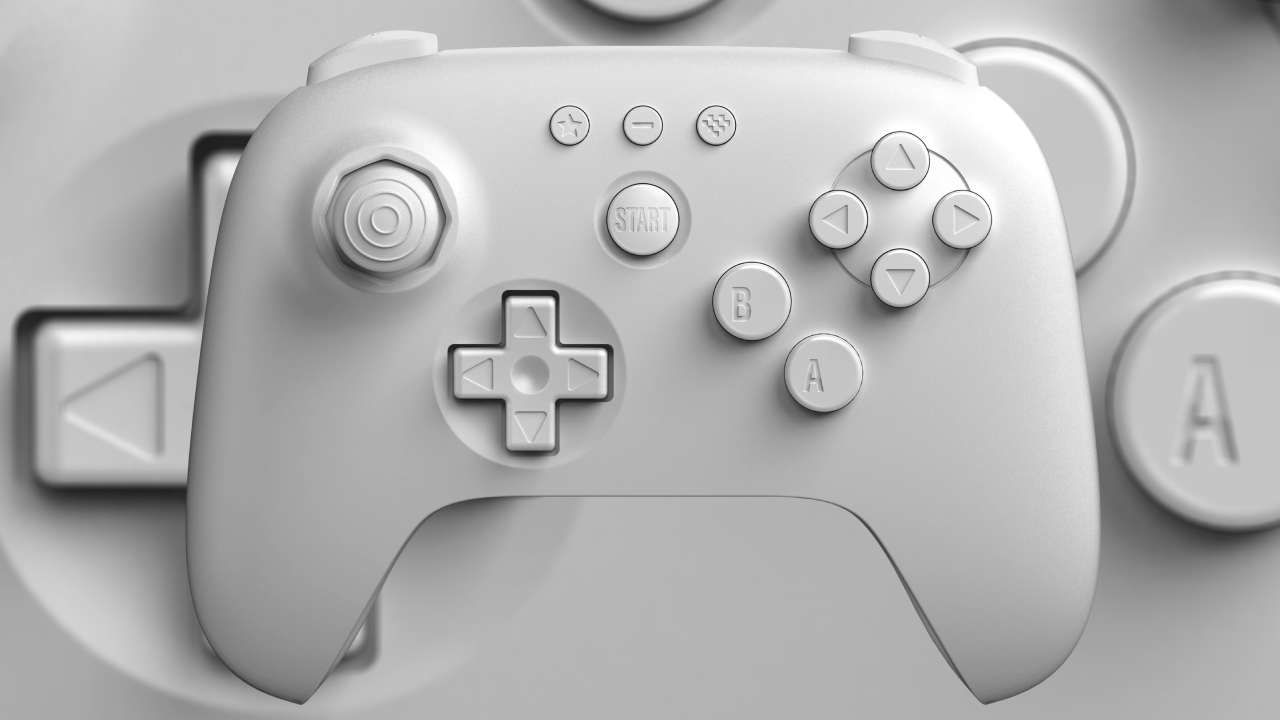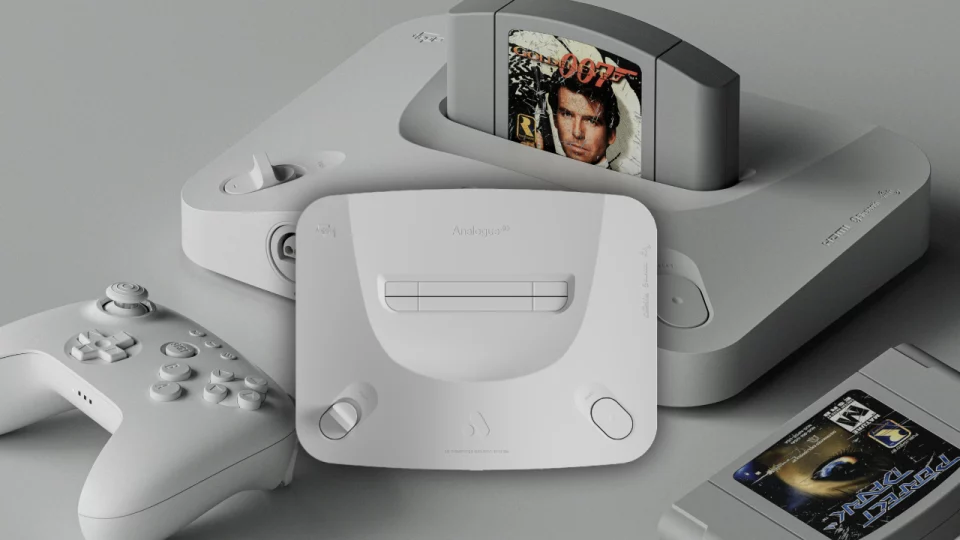Analogue, a company known for revamping classic consoles, has announced its most ambitious project yet — a 4K Nintendo 64, aptly named the Analogue 3D. With its release set for early 2025 and preorders opening on October 21st, 2024, this modern interpretation of the iconic N64 console has stirred excitement among gaming enthusiasts. Offering a sleek design, impressive upscaling features, and faithful compatibility with the original cartridge library, the Analogue 3D could redefine how we experience retro gaming.
Table of Contents
A Brief Overview of Analogue’s History
To understand why the Analogue 3D is such a highly anticipated product, it’s essential to explore the company’s previous achievements. Analogue has made a name for itself by crafting modern versions of classic gaming consoles that cater to the retro gaming community. From the Analogue Nt Mini, which faithfully reproduced NES games, to the Super Nt for the SNES, and the Mega Sg for Sega Genesis, the company’s commitment to detail, authenticity, and innovation has been clear. These consoles leveraged FPGA (Field-Programmable Gate Array) technology to provide true hardware-level reproduction of original consoles, rather than relying on software emulation. This allowed for minimal input lag, improved performance, and faithful recreation of gaming experiences from decades past.
Given the company’s strong track record, expectations for the Analogue 3D are sky-high. The N64 is notoriously difficult to emulate, due to its complex architecture and unique hardware specifications. Analogue’s decision to take on this challenge is a bold move, and their approach promises to offer a superior gaming experience, compared to current emulation methods.
Introducing Analogue 3D. A reimagining of the N64.
In 4K resolution. Perhaps the greatest multiplayer system of all time. Analogue 3D is the worlds first 100% compatible with every original N64 game ever made. Region Free. Bluetooth LE. Dual-band Wifi. Four original-style… pic.twitter.com/7WM3ByIU6C
— Analogue (@analogue) October 16, 2024
The Challenges of Emulating the N64
Before diving into the features of the Analogue 3D, it’s worth noting why the N64 has been so difficult to emulate over the years. Released in 1996, the Nintendo 64 was a revolutionary console for its time. It introduced 3D polygonal graphics and games that would become genre-defining classics, such as Super Mario 64, The Legend of Zelda: Ocarina of Time, and GoldenEye 007. However, its architecture was complex, utilizing a custom 64-bit processor and a unique graphics system that pushed the boundaries of what home consoles could achieve in the late ’90s.
Emulation software has struggled to replicate the N64’s original hardware, leading to performance issues, graphical glitches, and input lag in many instances. While modern computers are powerful enough to handle N64 games, software emulation often fails to capture the essence of the original gameplay experience. This is where the Analogue 3D sets itself apart by using FPGA technology, which replicates the N64’s original hardware architecture, ensuring compatibility and performance are as close to the real thing as possible.
Analogue 3D: A Modern Take with 4K Upscaling
One of the standout features of the Analogue 3D is its ability to upscale games to 4K resolution. This is achieved through a bespoke, purpose-built 4K upscaler, specifically designed to handle the intricacies of N64 games. While the original N64 ran at a much lower resolution (typically 240p or 480i), the Analogue 3D enhances these graphics for modern displays, breathing new life into classics without altering their core visual design. The inclusion of multiple display modes allows players to toggle between a modern 4K presentation or simulate the feel of playing on an old CRT television. This versatility ensures that both retro purists and modern gamers will be satisfied with the visual output.
The decision to offer multiple display modes is a crucial one. For many retro gamers, the authentic experience of playing on a CRT television is part of the nostalgia. The grainy, slightly blurred image of a CRT adds a layer of charm that modern displays can often lose. By offering a CRT-style display option, Analogue acknowledges the importance of preserving this aspect of retro gaming.
We’re serving up gaming history on a silver platter, seasoned with the respect and authenticity it deserves.
This is more than preservation; it is the revaluation of gaming history, honoring its profound significance.
Technical Specs: pic.twitter.com/jz0PwXI2nG
— Analogue (@analogue) October 16, 2024
100% Cartridge Compatibility and Region-Free Gaming
Another key selling point of the Analogue 3D is its 100% compatibility with original N64 cartridges. Unlike some emulation-based consoles, which rely on ROMs or digital copies of games, the Analogue 3D allows players to insert their original cartridges directly into the console. This ensures that the experience is as authentic as possible, with no compromises in game performance or authenticity.
Additionally, the console is region-free, meaning players can use cartridges from any region without the need for modification or adapters. This opens up a whole world of N64 games that were previously exclusive to specific markets, giving players the chance to experience rare and unique titles from Japan, Europe, and beyond.
Connectivity and Input Options
In terms of connectivity, the Analogue 3D offers a range of modern and retro options. It features Bluetooth support, making it compatible with modern wireless controllers, and includes four original controller ports, which means players can use their classic N64 controllers for an authentic experience. This is particularly important for multiplayer games like Mario Kart 64 and GoldenEye 007, which were staples of couch co-op gaming in the ’90s.
The console also includes two USB ports and an SD card slot, which opens the door for future updates, additional content, or even homebrew development, a popular practice within the retro gaming community. These modern conveniences make the Analogue 3D a versatile system that can cater to both purists and more tech-savvy gamers.
The New Operating System: 3D OS
The 3D OS, Analogue’s new operating system designed for the Analogue 3D, is another intriguing feature. While not much is known about the specifics of this OS at the time of writing, it’s expected to enhance the overall user experience with modern conveniences like save states, graphical tweaks, and other quality-of-life improvements. Given Analogue’s history of delivering intuitive and well-designed operating systems for their previous consoles, it’s likely that 3D OS will be user-friendly and tailored to the needs of retro gamers.
The Controller: A Nod to the Past, Updated for the Present

One aspect that the Analogue 3D doesn’t include in its base package is a controller. However, Analogue has partnered with 8bitdo, a company well-known for creating high-quality retro-inspired controllers, to develop a modernized version of the N64 gamepad. Priced at $39.99, this new controller removes the controversial third prong from the original N64 design while introducing a Hall effect joystick, which offers more precise and durable control. The controller is not only compatible with the Analogue 3D but can also be used with the Nintendo Switch, Android devices, and PC.
This updated N64 controller addresses one of the most criticized aspects of the original hardware — the awkwardly designed three-pronged layout that confused many players. With its streamlined design, the 8bitdo controller aims to deliver a more ergonomic experience while maintaining the retro charm that fans of the N64 know and love.
